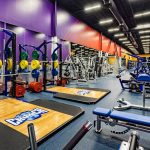Gander Mountain benefited from good summer weather, an expanded footprint, and controlled spending during the second quarter, but still saw consistently declining comp store sales. In spite of this mid-single digit decline in top-line comp sales, the company was able to generate higher levels of gross margin dollars on a comp store basis during the quarter as well as higher levels of profit dollars. This, combined with a considerable reduction in advertising expenses allowed GMTN to cut its net loss by $2.8 million for the quarter. Comp store sales were negatively impacted by 2% due to cannibalization and competition.
The 70 basis point increase in gross margins was due to the companys full roll-out of their “everyday low price” program, which created a less promotional pricing strategy. Improved inventory and supply chain management also had an impact on margins by reducing the quantity of clearance merchandise. Both of These strategies also had a negative top-line impact from less promotional and clearance traffic.
The improvement in initial product margin was largely offset by a de-leveraging of store occupancy costs, a result of lower comparable store sales and lower sales per square foot at the newer, less mature stores. Store occupancy costs reduced margins 140 basis points.
Margins were also improved by an increase in private label penetration during the quarter. Private label was 10% for the quarter, compared to 9% last year. Full year last year it was 9.5% and the company expects it to be “several hundred basis points” higher this year with the opportunity for penetration to eventually rise to the “high teens.” The company introduced new Guide Series bows, field wear, and technical outerwear with Gore-tex and PrimaLoft
Gander has several merchandising initiatives underway, including an overhaul of its firearms department, bringing the archery service desk to a more prominent position in the stores, and new GPS displays from Garmin. Additionally, management is pleased with the recent S.C.U.B.A. roll-out in several stores and they plan to add it to two additional stores shortly. During the quarter, fishing was slow to start but has gained momentum and the company has seen strong sell-through in paddle sports.
Store operating expenses as a percentage of sales declined due to strict expense management during this period of historically slower sales. The company reduced advertising and marketing expenditures by approximately 50% in the second quarter. Management feels that these expenditures are less effective in driving sales in the seasonally slow first and second quarters and will return to historical advertising levels in the third and fourth quarter. Sales per labor hour also improved in spite of lower sales. Investments in improvements at the companys distribution center over the past year resulted in a 10% reduction in distribution costs for the quarter despite a 7% increase in freight costs as a result of higher fuel prices.
During a conference call with analysts, Gander CEO Mark Baker said that he decreased advertising because his team felt they overspent in the past and it was more effective to use their advertising resources during the busier quarters. This is one step to drive profitable sales during the second quarter.
Long term, a significant percentage of the planned 300 to 400 stores will be in second- and third-tier markets. This is due to lower advertising expenses, less competition and generally better gross margin opportunities due to the less promotional nature of the markets.
| Gander Mountain | |||
| Second Quarter Results | |||
| (in $ millions) | 2006 | 2005 | Change |
| Total Sales | $182.5 | $173.8 | 5.0% |
| Gross Margin | 24.2% | 23.5% | +60 bps |
| Net Income | ($7.6) | ($10.4) | -27.2% |
| Diluted EPS | (53¢) | (73¢) | -27.4% |
| Comp Sales | -6.7% | -4.2% | |
| Inventories* | $334.9 | $322.2 | +3.9% |
| *at quarter-end | |||















